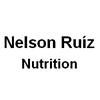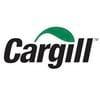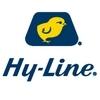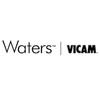Nutritional alternatives to mitigate heat stress

At this stage, Mineral supplements through water will be immediately absorbed, and the deficiency can be removed.
Integration of dietary betaine with this procedure significantly reduced feed cost and improved productivity and stock livability in hot weather's
The NGO is headed by Dr Stephen Adejoro with over 45 years practical experiences in the tropics.
Livestock Industry Foundation for Africa ,since 2019 have had training in 48 locations in Africa ,including Nigeria where the programme started in 2019.
So far the NGO had visited 20 countries in Africa,mostly from West Africa and East Africa.
This year the country will further visit farmers in Tanzania,Uganda and Rwanda .
This NGO is still interested in collaboration with international organization that cherished improvement in Animal food security.
To follow all our activities in Africa link to https://blog.lifango.org
for contact write lifango48@gmail.com
Attention Dr Stephen Adejoro
President

They will eat as much to fullfill their bag capacity in order to have plenty of available feed for a longer period of time.

When there is heat broilers will skip noon meals and will keep eating late in the evening. But over lighting at night it is also another canibalistic problem.

.jpg&w=3840&q=75)

Sustainability: Advanced Lysine source beneficial for farm animals and the environment
@Luis De Uriarte
Using any pure amino acid is justifiable on cost grounds; just make sure you are using digestible amino acids (preferably Standardised Ileal) as your target / specification. Their use will allow reduction of crude protein, that in itself will reduce nitrogen excretion and ammonia production. Additionally, of course, Methionine is the precursor to glutathione, the primary antioxidant in tissues and therefore in great demand in heat-stress condition. The work done by Evonik clearly shows cost-effective performance benefits by feeding amino acids above standard recommendations in stress conditions. As birds under stress conditions consume less feed, the daily requirement for SID amino acids is not met, so growth declines and FCR increases. Increasing amino acid density in feed combats this.

Dear All! I like Dr. Ruiz's arguments very much. Restricting feeding, besides light control, is a very complicated issue once we depend on people to make the restriction, and it is impossible to see all farmers doing whatever should be done, based on the company´s recommendation. At the hottest period of the day, leave the chicken alone. This is a recommendation to broilers that are produced in conventional chicken houses. If the houses are negative pressure ventilated, the environment is ok, and no restriction should be recommended. Also, we need to be concerned with water temperature. In a hot environment, water can be hot, too. So, we need to be creative to reduce the water temperature, and that will help all bad consequences on a hot environment, regarding feed consumption. Once this is more complex to do, we start looking for solutions that impose cost to the production, but apparently it is easier to do.
In cases of high temperatures, I use sodium bicarbonate in drinking water at a rate of 1 kg per 1,000 liters of water with good results.
Bicarbonate allows us to compensate for pH, increasing it and restoring the acid-base balance in the blood.
On the other hand, heat stress also causes sweating and loss of fluids and electrolytes, especially sodium, which is provided by bicarbonate. The use of bicarbonate also reduces panting, which can be verified by reducing mortality due to heat stress.

Regarding the use of sodium bicarbonate, it works, but the temperature of the water must be around 25 to 28ºC. Higher temperatures are detected by lingual thermosensors that restrict the water consumption, and the bicarbonate effect can be reduced.
Are you saying that if water temps are beyond 25 to 28 then Sodium Bicarb has no effect?

sensors react to water temperatures above 25oC.
@Antônio Mário Penz Junior
Thank you. So in a hot weather, 30C, that has no method of cooling the water what would you recommend to use? Some will suggest flushing lines, but if you don't do that continuously, it has little effect on water temp, because the environment and the plastic of the line quickly warms the water back up to room temp.
What I have learned is you acclimate the flock in hotter months so they get used to the heat.
.jpg&w=3840&q=75)

Jonathan Cade comments on his new role as Chairman of the U.S. Poultry & Egg Association

Mr. Entz, we need to consider hot weather and/or hot water. If we have hot weather and cold water, we need to preserve the water temperature based on putting the pipe line deep in the floor to maintain it cool from the origin. In this case, flushing the water helps.
However, if the water comes hot from the origin, flushing does not work. Still, new negative pressure chicken houses projects are not considering to add a cooling water system. It will come in the future! It represents almost nothing in a very expensive project.
And why is it still not available? Because we do not give the right attention to water temperature and its bad consequences in broiler production!
@Antônio Mário Penz Junior. I think you're right, the only way to keep water cool is to have a system that will circulate the water through the drinking lines. Because, even if you're incoming water into the house is at 2C, the heat that comes of the plastic of the water line, will quickly warm the water up to undesired temps. I have monitored this, and within minutes the water is back up to barn temps, especially further down the line in the house.
Back to using Sodium Bicarb. when water is above 28, do you think that it's a waste, just stick to sodium chloride? Your comments on this topic has caught my attention. We all read about the benefits of bicarb also in layer diets, but talking to some farmers they'll comment that they see no difference in egg shell quality when using bicarb for salt, could water temps be the reason?


@Antônio Mário Penz Junior. Hi ANTONIO, good to hear from you. Environment and water are external complications of heat stress. May I add an internal factor that is additive? If fat must be metabolically synthesized to support fully finishing the growing bird or be necessary for maximal yolk synthesis with layers, its generation must arise from concurrently consumed carbohydrates/ protein. Such metabolic synthesis generates approximately 10% of their kcal as byproduct heat. Conversely, dietary fat can avoid this heat. A hot environment would necessitate its dispersal adding to heat stress while a cold environment favorably uses it to maintain body temperature thereby improving feed conversion. It pays to include dietary fat commensurate with concurrent net need of fat by the body at-large. Heat stress control is a multifaceted process.




Yes. Partitioning of Na requirement of birds thru SBC & Salt will make a sense .



Hangzhou DE Mark Industrial Co Ltd
- permanent flushing in drinkers' line (if it can be made)
- feed at midnight: in hours with low temperature
- In this moment, the birds increase the consumption, and help with lower deficient levels of energy, amino acids, minerals, vitamins, etc.
Why is the water so hot to begin with?
There's so much to be done when the water drums are sun-exposed, for example, yet as I work in the Caribbean, I find it so hard to get this message across.
Yes, it will be fantastic to have piping underground, but I'm sure we all understand how complicated that can get once it's already set up incorrectly.
Start by providing shade to the drums, actions done swiftly and cheaply only once, and you'll be reaping benefits for many flocks over and over. People think that a coat of white is enough, but by all means, keep going and provide some shade and curtains.
Manuals will tell you that birds will like their water at 15 to 20 degrees Celsius, which is very hard to achieve in tropical climates, but still, I'm getting readings of water at over 30°, you can bet heavily on knocking a couple of degrees here and a couple of degrees there, birds will be so much better for it.






























